The circumpolar constellation, Ursa Minor.
Click on image for full size
Windows to the Universe original image
Ursa Minor (Little Bear)
Ursa Minor is usually called the Little Dipper. There is also a constellation called Ursa Major, which is called the Big Dipper. In many different myths, the two are bears. In Greek mythology, Hera turned Callisto into a bear because she was jealous of her. Zeus put the bear in the sky along with the Little Bear, which is Callisto's son, Arcas.
The tail of the Little Bear ends with the North Star, Polaris. It is called the North Star because it is at the celestial north pole. Just below the star is a small circle of stars called the "engagement ring". They can be seen using a telescope or binoculars.
To find Polaris, first find the Big Dipper. Imagine a line drawn connecting the right edge of the "bowl". If you keep drawing the line north, it will come to the North Star. Pretty neat!
You might also be interested in:
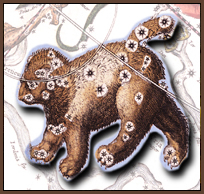
Many different constellations fill the evening sky in the northern hemisphere. Depending on your location and the season, different constellations can be seen. Northern circumpolar constellations can be
...more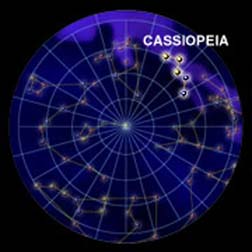
Cassiopeia was the queen of an ancient land. She and her husband, Cepheus, had a daughter named Andromeda. Cassiopeia would always say she was prettier than the sea nymphs. A monster called Cetus was
...more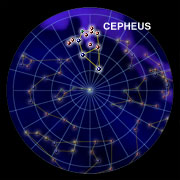
Cepheus was a king in Greek mythology. His wife was Cassiopeia and his daughter was Andromeda. Cassiopeia once said some things to make the sea god angry. A monster was sent up to eat Andromeda, but Perseus
...more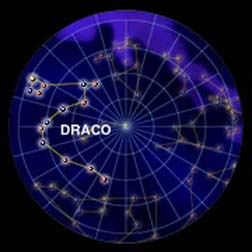
Draco the dragon is a long constellation found in the Northern Hemisphere. It is a circumpolar constellation, which means it revolves around the North Pole. People in the Southern Hemisphere can't see
...more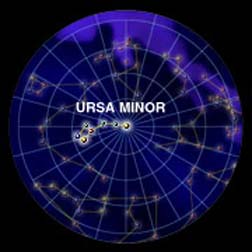
Ursa Minor is usually called the Little Dipper. There is also a constellation called Ursa Major, which is called the Big Dipper. In many different myths, the two are bears. In Greek mythology, Hera turned
...more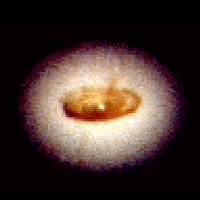
No one is sure that Black Holes really exist, but most scientists think they do. They are very hard to see, because they are black and so is space. They are black because their gravity is so strong that
...more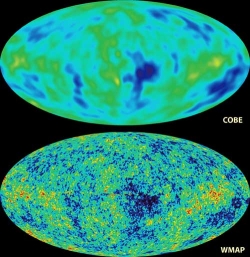
In the 1960's, a pair of scientists noticed some annoying static (like you hear on the radio) when trying to use a special radio antenna. The strange thing about the noise was that it was coming from every
...more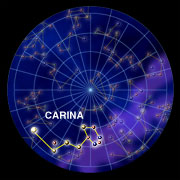
The constellation Carina is known as the Keel. A keel is the wooden bottom of old sailing ships. Carina used to be a part of the large constellation called Argo Navis. It was divided up into four different
...more














